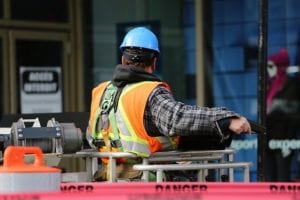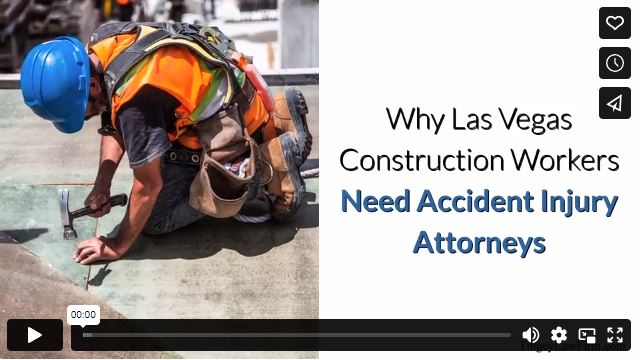If you work in construction, you have likely experienced plenty of “close calls” in your career. You might have slipped up with a hazardous tool, lost your balance while on a ladder or been hit by falling debris. If you do road construction, you may have had a speeding motorist get a little too close for comfort after they blatantly disregarded the “reduced speed ahead” signs.

(Pixabay / Life-Of-Pix)
At Tingey Injury Law Firm, we are grateful for our nation’s construction workers who build our infrastructure and fuel our economy—often at considerable risk. In this article, we’ll talk about the most common dangers facing your career field and end with some ideas for getting help if you’ve been injured on the job.
How dangerous is it to be a construction worker?
Nearly seven million people in the US go to work on construction sites on any given day. The fatal injury rate for the construction industry is higher than the national average for other industries. Just how dangerous is it to be a construction worker?
Construction has one of the highest rates of fatal occupational injuries out of all industries, according to national statistics from the Bureau of Labor Statistics (BLS). For perspective, construction work was over three times more likely to cause a fatal accident than manufacturing work in 2018.
What are the primary causes of construction injuries?
According to the Occupational Safety and Health Administration (OSHA), potential hazards for workers in construction include:
- Falls (from heights);
- Trench collapse
- Scaffold collapse
- Electric shock and arc flash/arc blast
- Failure to use proper personal protective equipment
- Repetitive motion injuries
- Unguarded machinery
- Being struck by heavy construction equipment
- Electrocutions
- Exposure to silica dust
- Exposure to asbestos
What are the most common causes of construction injuries in Las Vegas?
One way to answer this question is to look at the citation record kept by the Occupational Safety and Health Administration (OSHA). If Las Vegas follows national trends, then the most common OSHA standards included in the agency’s citations involve:
- Scaffolding
- Fall protection (scope, application, definitions)
- Excavations (general requirements)
- Ladders
- Head protection
- Hazard communication
- Fall protection (training requirements)
- Construction (general safety and health provisions)
- Electrical (wiring methods, design, and protection)
Are skyscraper construction sites more dangerous than non-skyscraper sites?
Absolutely. Working at heights is considered to be the most dangerous construction job. Industry experts estimate that 40% of construction-related fatalities are the result of falls from heights. Concrete work and lifting with cranes are considered some of the most dangerous jobs at a height.
Are demolition jobs as dangerous as construction jobs?
The unpredictable nature of demolition jobs makes them highly dangerous. Despite engineers’ best efforts to predict how age and weather will affect the internal structure of buildings, demolition jobs always involve risk and unknowns. Electrocution is a common demolition injury. Falling debris is another cause of injury to construction workers at demolition sites.
Besides working at heights and demolition jobs, what are the other most dangerous construction jobs?
Sewer and duct construction jobs are considered the third most dangerous kinds of construction jobs. Working in confined spaces presents difficulties in emergency exits and makes working with power tools and heavy machinery even more perilous. These construction sites are largely underground and out of the public eye, but they present very real hazards for construction workers.
After working from heights, demolition jobs, and sewer and duct construction, the next most dangerous construction jobs involve operating heavy equipment and power tools. Special licensing is required for workers to operate heavy equipment, but even highly experienced workers manage risks rather than alleviating them. Operators rely on machinery inspectors and maintenance workers to make sure that heavy machinery and power tools are functioning properly. Repetitive work involving power tools and heavy machinery becomes even more dangerous if workers “zone out” and lower their defenses.
What steps should I take if I have been injured while working in construction?
1) Tell your employer immediately—even if the injuries seem mild. Your employer should then file a workers’ compensation claim.
2) See a doctor. Even if your injuries seem minor, see a physician. Some construction-related injuries may appear insignificant at first but may worsen over time. It’s best that you see a doctor who can assess the scope of your injuries.
Where workers’ compensation is concerned, you probably won’t be able to see any doctor you choose. Rather, ask your employer if there is a list of approved physicians that you should consult. If you are unhappy with your diagnosis, ask if you are entitled to a second opinion. If not, consider seeing a doctor on your own and documenting all of the associated costs.
3) Comply. Make sure to do what your doctor tells you to do. They may have recommendations for taking time off of work, limiting your physical activity, attending follow-up appointments, or seeking out physical therapy, etc. Make sure that you follow-through on what they ask you to do. Otherwise, you could weaken your workers’ comp case.
4) Get additional counsel if needed. If you are unhappy with the way your workplace is handling your case, consult one of our accident injury attorneys. They can advise you about the compensation and benefits you are entitled to and help you know if you have a good legal case if you feel your employer is not honoring your rights.
Video

